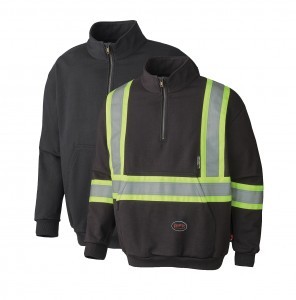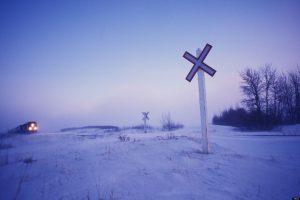What can you do to brave the outdoor elements this winter? The answer to this question is easy for most of us: layer up. One popular choice is to wear a hoodie underneath a parka. However, many companies have implemented bans on employees wearing hoodies, or at least the hood portion. While your favorite hoodie may be comfy and warm, wearing it to work can cause safety concerns on the job site.
The Dangers of Wearing Hoodies at Work
Hoods can extend past your eyes and can block your peripheral vision, which limits your ability to see potential danger around you. This is especially important for heavy equipment operators, or anyone who works in and around forklifts and vehicles.
The drawstrings of hoodies can become entangled in moving equipment, creating potentially horrific consequences. Anyone who works on the floor of a machine shop or a drilling rig should know the hazards of loose-fitting clothing and dangling jewelry and drawstrings.
Pioneer FR Hoodless Hoodies Combines Comfort and Safety
Pioneer Fire Resistant Hoodies offer you the comfort and design of a typical hoodie without the hassle of the hood and drawstrings. These “hoodless hoodies” will keep you from breaking any of your company’s Personal Protective Equipment (PPE) rules, with a few added bonuses.
- Pioneer’s ‘hoodless’ hoodies can be worn on any job site because they do not impair your vision. They can be paired with balaclavas and hardhat liners for maximum protection from the cold.
- If your company prohibits hooded sweaters and still requires FR attire, Pioneer Hoodies are 100% FR treated meeting the Canadian General Standards Board (CGSB) standards.
- The hoodie’s convenient quarter-zip design helps to minimize heat loss.
- Pioneer also offers a Hi-Viz hoodie option that improves how well other people see you should you choose to wear it as an outer layer.
If you’re tired of being told to tuck in your hood or if hoodies have been banned on your job site, Pioneer’s ¼ zip FR pullovers will keep you warm and safe while working in the cold this winter.
Stay warm. And as always, stay safe.


